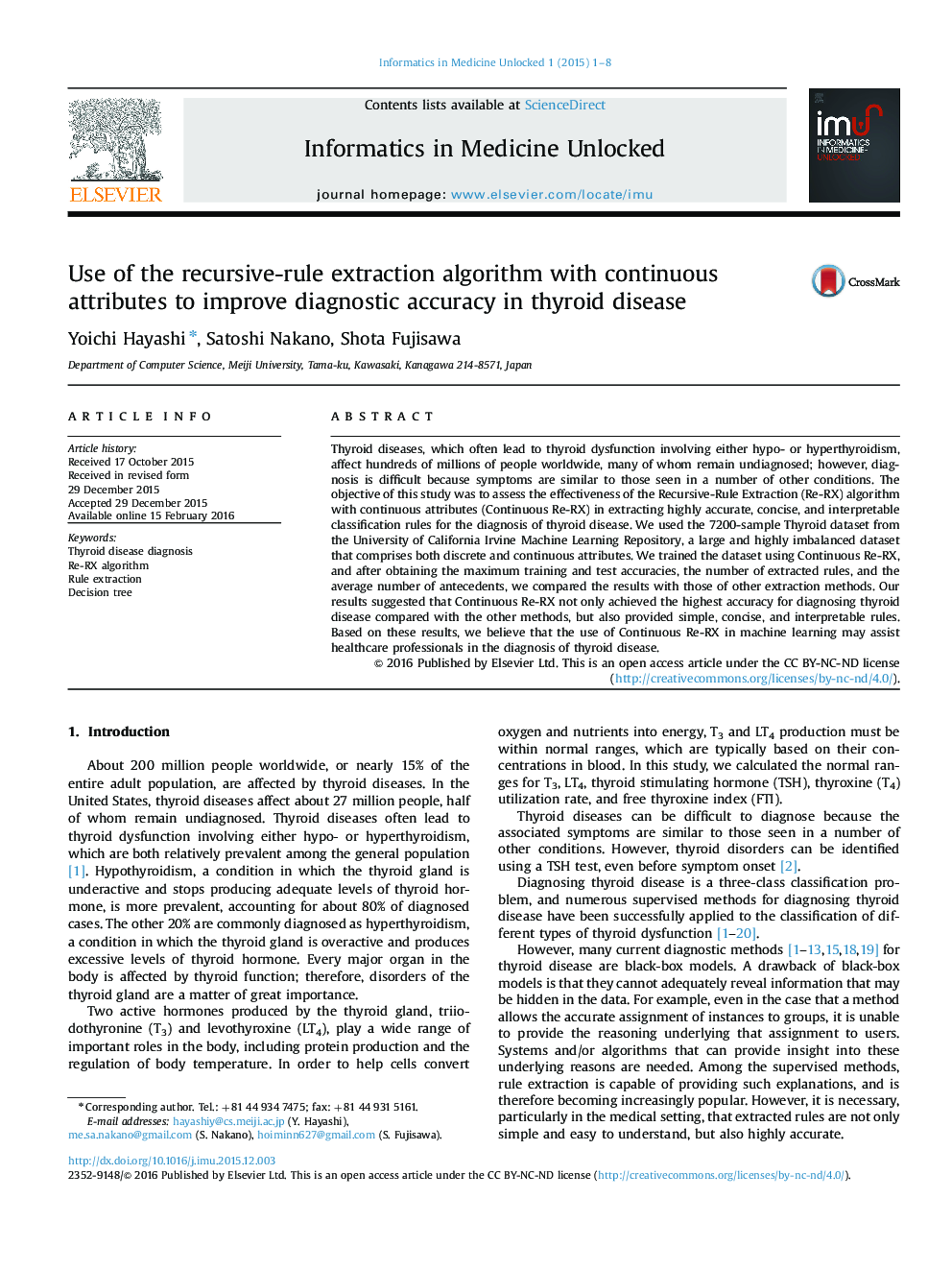| Article ID | Journal | Published Year | Pages | File Type |
|---|---|---|---|---|
| 483483 | Informatics in Medicine Unlocked | 2015 | 8 Pages |
•Proposed a Recursive-Rule Extraction algorithm with continuous attributes.•Extracting accurate, concise, and interpretable rules for thyroid disease diagnosis.•Not only achieved very high accuracy, also extracted concise and interpretable rules.•Highly accurate rules expected to assist physicians for thyroid dysfunction diagnosis.
Thyroid diseases, which often lead to thyroid dysfunction involving either hypo- or hyperthyroidism, affect hundreds of millions of people worldwide, many of whom remain undiagnosed; however, diagnosis is difficult because symptoms are similar to those seen in a number of other conditions. The objective of this study was to assess the effectiveness of the Recursive-Rule Extraction (Re-RX) algorithm with continuous attributes (Continuous Re-RX) in extracting highly accurate, concise, and interpretable classification rules for the diagnosis of thyroid disease. We used the 7200-sample Thyroid dataset from the University of California Irvine Machine Learning Repository, a large and highly imbalanced dataset that comprises both discrete and continuous attributes. We trained the dataset using Continuous Re-RX, and after obtaining the maximum training and test accuracies, the number of extracted rules, and the average number of antecedents, we compared the results with those of other extraction methods. Our results suggested that Continuous Re-RX not only achieved the highest accuracy for diagnosing thyroid disease compared with the other methods, but also provided simple, concise, and interpretable rules. Based on these results, we believe that the use of Continuous Re-RX in machine learning may assist healthcare professionals in the diagnosis of thyroid disease.
